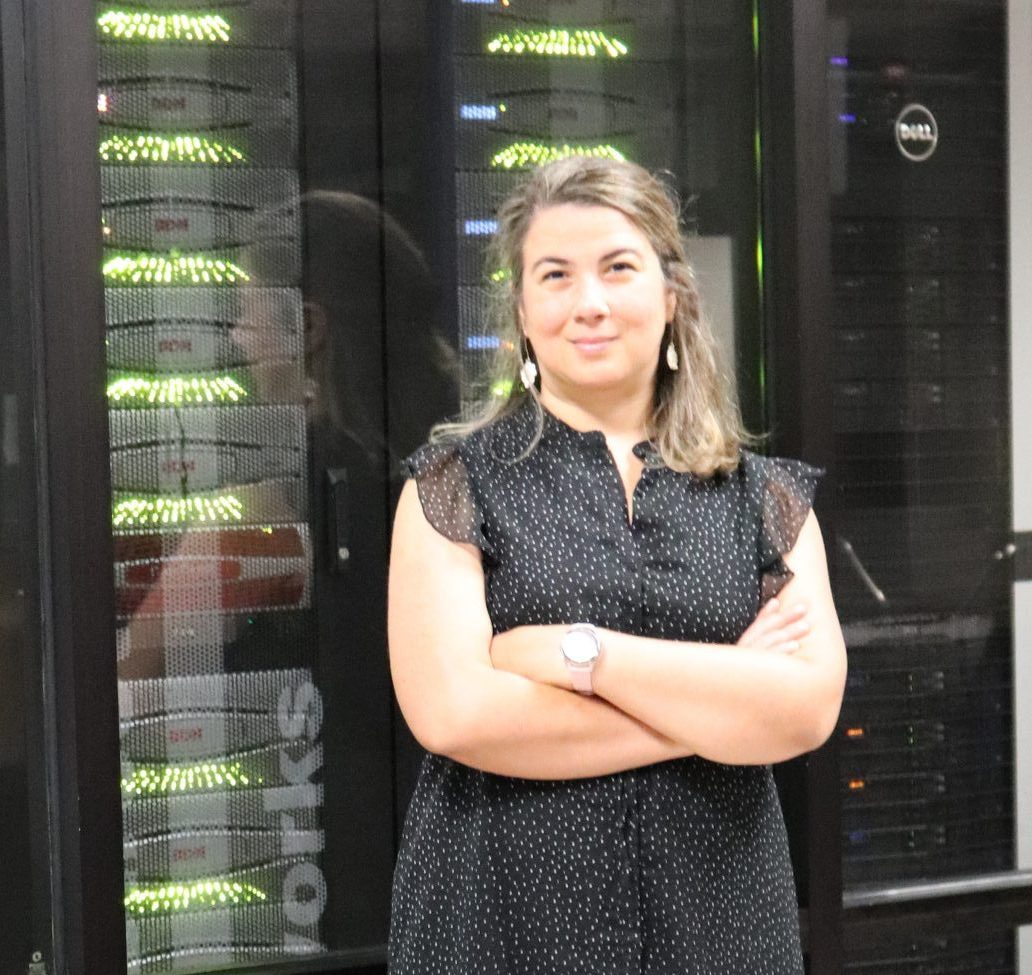When Climate Risks Combine
Q&A WITH DANIELLE TOUMA

Danielle Touma is a research assistant professor at the University of Texas Institute for Geophysics. Learn about how she is finding connections and calculating risks between extreme climate events, like wildfire and drought.
By Monica Kortsha
Q: Will you please tell me a bit about yourself and your research?
A: I’m a climate scientist and I work on understanding what’s driving the changes in the risk of extreme climate events. That means anything from floods to droughts to wildfires. One topic I’ve been trying to look at more recently is “cascading events” – which are two events that occur one right after another, with one event setting the stage for the next.
Q: Cascading events sound pretty serious. Can you give me some examples?
A: Take the case of a wildfire followed by rainfall. The wildfire can set the stage for a big debris flow if a rainfall event came through. This is something that happened in Southern California in 2018, with a big post-dire debris flow in Montecito which was super damaging and had loss of life as well. Another example is a drought or heat wave that sets the stage for a wildfire.
Q: You also study extreme climate events called “compound extremes.” How are these different from cascading events?
A: Cascading events happen more or less consecutively in time in the same location and are a subset of compound extremes. Compound extremes can also occur at the same time in different locations, like a wildfire in northern California and southern California happening at the same time. The strain this puts on firefighters and other resources can make the fires even more destructive. There could be more smoke and fewer medical resources.
Q: How do you actually study what’s driving the risk for these types of events?
A: We’re seeing that these types of extreme events are becoming more frequent under a warming climate. But to actually quantify risk involves a lot of data analysis and statistics using observational data sets and Earth system models. Observational data sets can be anything from weather station data to satellite data. I use this data to understand what’s happened in the recent past with these extremes – so I look at things like precipitation data and temperature data. But for understanding how humans have influenced the past and how they’re expected to influence it in the future we use Earth system models.
Q: What are Earth system models?
A: Historically, they were called coupled global climate models. Now they include a lot more than just the atmosphere, land, and ocean so we call them Earth system models. These models are basically a representation of all the physical processes and dynamics on our Earth system and how they all interact with each other. They include surface vegetation, oceans, sea ice. By adjusting the data and equations you put in, you can get different things out of it and we can study the Earth system under different scenarios – like whether CO2 emissions decrease, increase or stay the same.
I take data from these models and analyze them and try to find extreme events. For example, for picking out a heatwave, I try and find days where temperatures in a certain region exceed a certain value that has impacts on humans, or agriculture or parts of the ecology. I then use statistical methods to understand if there are trends or changes in these extremes.
Q: Your experience with extreme events isn’t just from research. You have lived through them, right?
A: Yes! I lived through some wildfires in California during grad school and one of my postdocs and then in Colorado. It’s funny, when I was going through that I was not thinking about research. I was just like, “how am I going to deal with this – do we need to evacuate and is the smoke going to affect us?” It’s a very different experience than my research, which is at the global or continental scale. Living through these extreme events has also led me to start working with communities and really understanding how humans are dealing with climate change, especially in the context of extreme events.
Q: Can you describe some of this work with communities?
A: There are a couple of different projects. But a recent NASA proposal that I (and collaborators) submitted involves working with the Karuk Tribe in Northern California to understand their risk to climate extremes in the future. We want to try and to use satellite observations to understand how things have changed in the recent past, but also look toward the future to understand wildfire, drought and extreme rainfall risk.
The Karuk community members have a lot of traditional practices surrounding fire, and rely on it for their livelihoods and cultural activities. We want to incorporate tribal knowledge with scientific knowledge so that we can support their ability to use fire under climate change.
Q: The Jackson School just recently launched a new undergraduate degree in climate system science. What do you think makes a good climate scientist?
A: The most important thing is to be curious about how the world works. There’s a lot of different parts of climate science and there really is something for everyone.
For example, if you’re a really good software engineer, you might want to look at climate science. There’s a lot of software engineering in climate science, and we need these engineers for model development. You can make a difference working from your computer, just like I do!
The University of Texas at Austin
Web Privacy | Web Accessibility Policy | Adobe Reader

